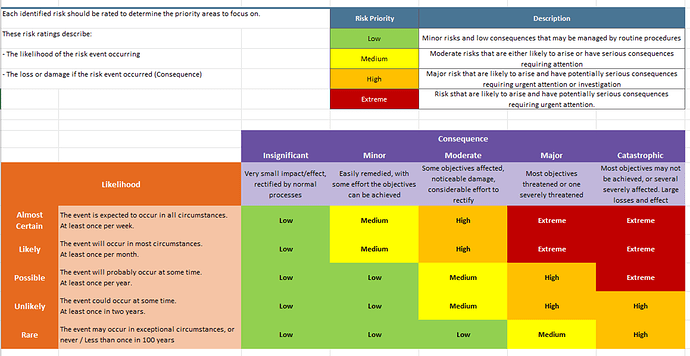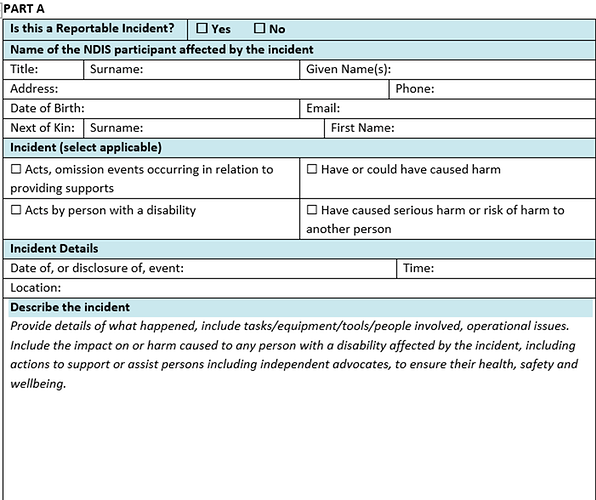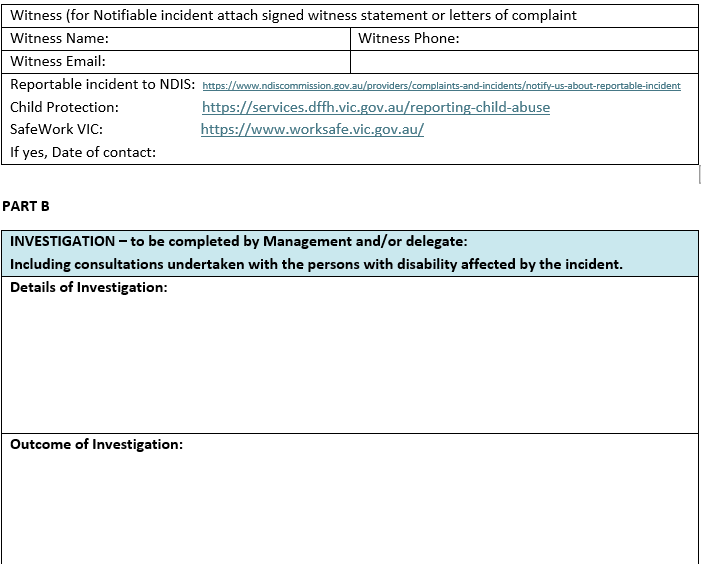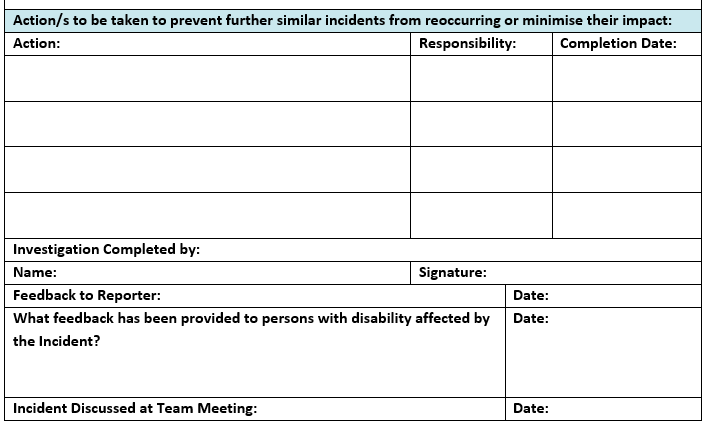We have finally come to the last section of the NDIS Practice Standards, Provision of Supports Environment. This article will cover the documentation expectations related to the conditions and environments in which supports are provided to participants.
The outcomes covered by this section are found on pages 15-18 of the Practice Standards and include:
- Safe Environment
- Participant Money and Property
- Management of Medication
- Mealtime Management
- Management of Waste
So what are the NDIS and auditors looking for?
They want to be able to see that:
- You take all necessary steps to ensure participants receive supports in a safe environment, including the easy identification of support workers.
- If applicable, you have systems and processes in place to ensure participant’s money and/or property is managed, protected and accounted for with consent from the participant.
- If applicable, you have processes in place to safely identify, administer, record and store participant medication and dosage. This includes training by staff in medication administration and incidents.
- You have policies, procedures and practices in place for the safe and appropriate storage and disposal of waste, infectious or hazardous substances. This includes incident management, emergency plans and staff training.
The good news about this section is that all the documents have been covered in the previous articles about Rights and Responsibilities, Governance and Operational Management and Provision of Supports. The documents which support each outcome are listed below.
Safe Environment
- Emergency and Disaster Management Plan
- Human Resource Register
- Participant Assessment and Support Plan
- Participant Handbook
- Participant Home Risk Assessment Checklist
- Risk Register
- Staff Handbook
- Staff Induction Checklist
- Staff Training Matrix
Participant Money and Property
- Incident Register
- Incident Report
- Participant Consent Form
- Participant Money and Property Register
- Staff Induction Checklist
- Staff Training Matrix
Management of Medication
- Administration of Medication Evaluation Checklist
- Incident Register
- Incident Report
- Medication Administration Record
- Medication Management Consent Form
- Staff Handbook
- Staff Training Matrix
Mealtime Management
- Mealtime Management Plan
- My Eating and Drinking Profile Form
- Staff Training Matrix
Management of Waste
- Continuous Improvement Form
- Emergency and Disaster Management Plan
- Hazard Report Form
- Incident Register
- Incident Report
- Staff Induction Checklist
- Staff Training Matrix
- Waste Management Plan
Let’s take a closer look at some important documents and what you need to include.
Risk Management
An essential system related to providing a safe environment is your Risk Management (RM) System. The NDIA provides specific legislation that covers Risk Management – the National Disability Insurance Scheme – Risk Management Rules 2013. Your RM System should include:
- An RM Policy
- An RM Register
- A detailed incident and complaints management system
- Monitoring systems such as a compliance calendar, HR Register, register of interests, meetings and internal audits.
Looking at the RM Register, in particular, this document should outline identified risks and the associated management strategies. National Disability Services (NDS) has created a suite of free and customisable registers to help providers keep track of risks, incidents and complaints. Their Risk Register meets compliance requirements and includes a manual explaining the features of the register. Whether you utilise this resource or create your own register, some key information to include is outlined below:
- This example from the NDS Register shows the types of information your register is required to have and a potential layout.
-
Potential risks can be identified from multiple sources or “Risk Categories” across your business. These are compiled from various documents and assessments undertaken across the business including:
a. Strategic plans
b. Compliance
c. Financial
d. Operational
e. Environmental
f. Reputational
g. Health and safety
h. Incident Reports
i. Feedback and Complaints
j. Quality Improvement
k. Administration and IT records management
l. Service delivery
m. Emergency and disaster management -
An important part of risk management is assessing the risk priority. This involves using a Risk Analysis Matrix like the one below.
- After assessing the risk, it is essential to include your strategy to address or mitigate the risk. A document that can aid this process is a Safe Work Method Statement. This breaks down risk assessment into tasks such as cleaning a bathroom. Each task is divided into steps which are assessed and provided with a safety control such as in the below example for transferring a participant to a wheelchair.
Another important document that supports Risk Management is the Incident Report which we will take a closer look at.
Incident Report
This document is super important for all Providers. The NDIA also provides specific legislation which covers Incident Management – the National Disability Insurance Scheme (Incident Management and Reportable Incidents) Rules 2018. Section 12 of the Rules covers documentation, record-keeping and statistics. Specifically, sections 12.2 and 12.3 outline the required details for recording incidents and reportable incidents.
Both staff and participants must be made aware of this documentation on commencement with your service, this includes catering to multiple styles of communication.
Your incident report documentation should include (at a minimum):
- A description of the incident, including the impact on, or harm caused to, any person with disability affected by the incident.
- Whether the incident is a reportable incident.
- If known – the time, date and place at which the incident occurred, or
- The time and date the incident was first identified.
- The names and contact details of the persons involved in the incident.
- The names and contact details of any witnesses to the incident.
- Details of the assessment undertaken of the incident, including:
a. If it was preventable
b. How well it was managed and resolved
c. What, if any, remedial actions need to be undertaken to prevent or minimise the impact of similar incidents
d. If other persons or bodies need to be notified. - The actions taken in response to the incident, including actions taken to support or assist persons with disability affected by the incident.
- Any consultations undertaken with the persons with disability affected by the incident.
- Whether persons with disability affected by the incident have been provided with any reports or findings regarding the incident.
- Details and outcomes of any investigations undertaken by the provider concerning the incident.
- The name and contact details of the person making the record of the incident.
This information can be provided in a format that suits your organisation. Below is an example which includes all the above requirements.
Congratulations on reaching the end of the final article in this NDIS Practice Standards series in which we looked at the Core Module – Rights and Responsibilities, Governance and Operational Management, Provision of Supports and Provision of Supports Environment. Hopefully, this series has provided some introduction to the area of compliance in the NDIS.
Hopefully you have a better understanding and if there are any documents you are unsure about, feel free to ask and I will see if I can help.







